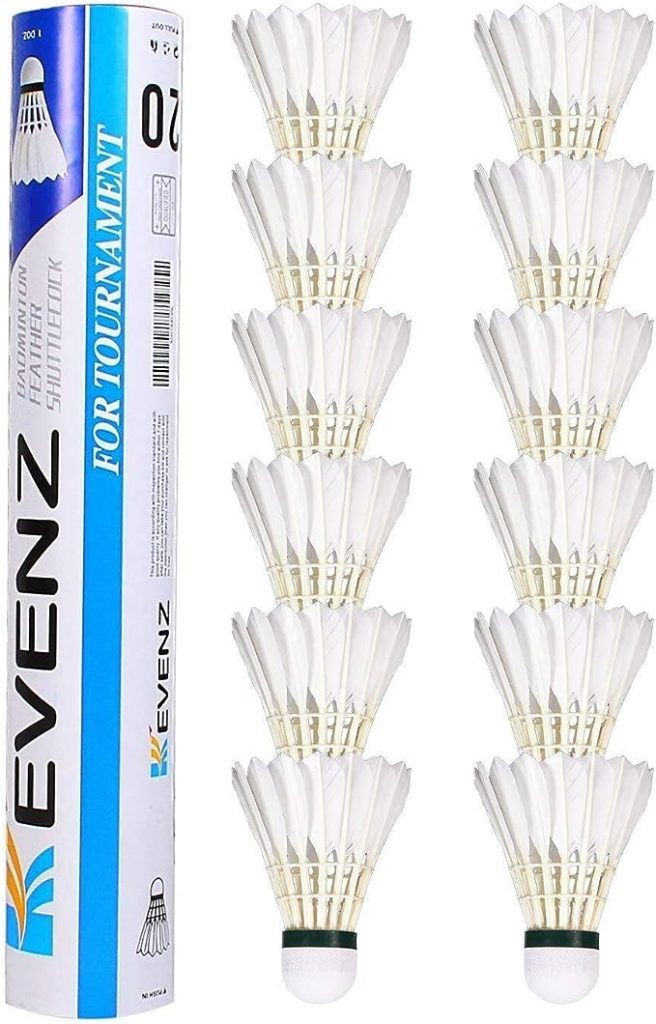
Selecting the right badminton shuttlecock is essential for players to maximize their performance and enjoyment on the court. With various types of shuttlecocks available, each offering unique characteristics, it can be challenging to determine which one suits your playing style and playing environment. In this comprehensive guide, we will explore four key points to consider when choosing the right badminton shuttlecock.
Feather vs. Synthetic Shuttlecocks
The first decision to make is whether to opt for feather or synthetic shuttlecocks. Feather shuttlecocks are traditionally made using goose feathers, recognized for their superior flight and feel. They provide a more authentic experience, offering natural flight, better control, and enhanced touch. Feather shuttlecocks are preferred for professional and higher-level play due to their exceptional performance. However, they are more delicate and have a shorter lifespan than synthetic shuttlecocks.
On the other hand, synthetic shuttlecocks are typically made with nylon or plastic materials. They are more durable, affordable, and suitable for recreational or casual play. Synthetic shuttlecocks offer consistent flight characteristics and are not as affected by environmental conditions, making them more resilient to changes in temperature and humidity. They are an excellent choice for beginners or players who prefer a longer-lasting option.
Shuttlecock Speeds
Shuttlecock speeds refer to the rate at which the shuttlecock travels through the air. Speeds are generally categorized into three types: slow, medium, and fast. Selecting the right shuttlecock speed is crucial for maintaining a balanced and enjoyable game.
Slow shuttlecocks are ideal for players who are just starting or have a slower swing speed. They offer more time to react and allow for longer rallies. Slow shuttlecocks are suitable for indoor play or environments with minimal air circulation.
Medium-speed shuttlecocks are the most commonly used and recommended for most players. They provide a good balance between control and power, catering to a wide range of playing styles and skill levels. Medium-speed shuttlecocks are suitable for both indoor and outdoor play.
Fast shuttlecocks are designed for advanced players with powerful shots and quick swing speeds. They offer a flatter trajectory and require quicker reflexes. Fast shuttlecocks are best suited for competitive play and indoor environments with good air circulation.
Durability and Cost
The durability and cost of shuttlecocks are important factors to consider, especially for players who play frequently or competitively. Feather shuttlecocks tend to have a shorter lifespan due to their delicate nature. They are more easily damaged from powerful shots or if they hit the ground or walls. Feather shuttlecocks are also more expensive compared to synthetic options.
Synthetic shuttlecocks, on the other hand, are more durable and can withstand rougher play and impacts. They are less prone to damage or deformation. Synthetic shuttlecocks are an economical choice for players who engage in regular play, allowing for longer use and reduced replacement costs.
It is important to note that even though feather shuttlecocks have a higher initial cost, they provide superior performance and a more authentic experience. Consider your playing frequency, budget, and playing environment when making a decision on durability and cost.
Playing Environment Considerations
The playing environment, whether indoor or outdoor, can greatly impact the choice of shuttlecock. Indoor environments usually have better air circulation, resulting in more stable flight characteristics. Feather shuttlecocks excel in indoor settings due to their responsive flight, touch, and control.
Outdoor environments present different challenges, such as wind and temperature variations, which can affect shuttlecock flight. Synthetic shuttlecocks are more suitable for outdoor play as they are less influenced by environmental conditions. They offer consistent flight and durability, making them a better choice for outdoor use.
Additionally, consider the altitude and humidity levels specific to your playing location. High-altitude areas may require faster shuttlecocks to compensate for the thinner air, while locations with high humidity may necessitate slower shuttlecocks to counteract the heavier air.



